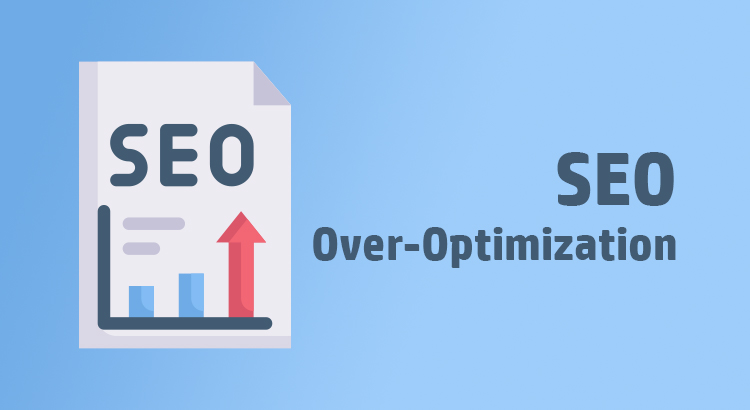The pursuit of better website rankings can sometimes lead to SEO over-optimization. This phenomenon occurs when SEO techniques are employed excessively or inappropriately, often in a bid to quickly improve website visibility, especially in response to algorithm updates.
However, over-optimization can come at a significant cost, compromising content quality and user experience. This blog post explains the signs of SEO over-optimization and explores strategies to identify and rectify these issues.
Related Article: Which Common SEO Mistakes Should You Avoid at All Costs?
What Is SEO Over-Optimization?
SEO over-optimization arises when website owners or SEO professionals employ tactics excessively or inappropriately to manipulate search engine rankings.
While the intention may be to achieve higher visibility, over-optimization can have detrimental effects on a website’s performance in search results and user satisfaction.
Supervision of a reputed SEO company will help website owners to optimize their website without overdoing anything.
Signs of SEO Over-Optimization
Here are the signs of over-optimization in search engine optimization.
1. Keyword Stuffing
Keyword stuffing involves excessively using key terms across text elements, disrupting readability and user experience.
While common in competitive niches, search engines penalize this tactic, resulting in reduced rankings and traffic due to the artificial manipulation of content.
2. Adding Irrelevant Keywords
Incorporating irrelevant keywords compromises content quality and user experience, deterring visitors expecting relevant information.
Such practices trigger search engine penalties, diminishing site visibility and credibility, ultimately impacting rankings and organic traffic negatively.
3. Optimizing Multiple Pages for One Query
Creating and optimizing multiple pages for the same query leads to keyword cannibalization, confusing search engines and users.
This practice hampers search engine rankings as it becomes challenging for algorithms to determine the most authoritative and relevant page for a specific keyword, resulting in decreased visibility and user engagement.
4. Over-Optimizing URLs
Over-optimizing URLs by cramming multiple keywords can hinder user experience and search engine visibility. Long, convoluted URLs are difficult to comprehend and share, affecting click-through rates.
Additionally, search engines may struggle to crawl and index such URLs efficiently, impacting the website’s overall ranking performance.
5. Overusing Links
While adding links enhances user experience and page authority, overusing them can overwhelm visitors and trigger search engine penalties. Excessive links distract users, leading to increased bounce rates and reduced engagement.
Moreover, search engines may perceive pages with an abundance of links as spammy, adversely affecting the site’s ranking.
6. Building Backlinks Too Quickly
Rapidly acquiring backlinks to boost site authority can signal manipulation to search engines.
While backlinks are essential for SEO, an unnatural influx can raise red flags, leading to penalties or even removal from search results. Sustainable link building strategies are crucial for maintaining long-term search engine visibility and credibility.
7. Multimedia Overload
While multimedia elements enhance content engagement, excessive use can compromise user experience and site performance. Overloaded pages may suffer from slow loading times and compatibility issues across devices.
Additionally, excessive multimedia can distract users from the main content, reducing readability and diminishing the overall quality of the webpage.
8. Too Many Redirects
While redirects serve various purposes, excessive usage can hinder user experience and search engine crawling. Each redirect adds processing time, potentially slowing down page loading speed and frustrating visitors.
Moreover, an abundance of redirects can confuse search engines, leading to indexing issues and diminishing the site’s authority.
9. Numerous Pages with Thin Content
Creating numerous pages with thin content to target keywords can negatively impact user experience and search engine rankings.
Thin content pages lack depth and fail to provide valuable information to users, resulting in high bounce rates and decreased site authority. Search engines perceive such pages as low-quality, potentially lowering the site’s overall ranking.
10. Footer Overloaded with Keywords
Stuffing keywords into the footer offers minimal SEO benefits and disrupts user experience. Search engines prioritize content within the main body of the webpage, rendering keyword-heavy footers ineffective for ranking purposes.
Moreover, an overloaded footer can clutter the page, making navigation challenging and detracting from the user-centric design.
Conclusion of the Signs of SEO Over-Optimization
Balancing optimization efforts with user experience is essential for maintaining a successful website. By recognizing the signs of over-optimization and implementing corrective measures, website owners can ensure their sites remain visible and valuable in the long term.


